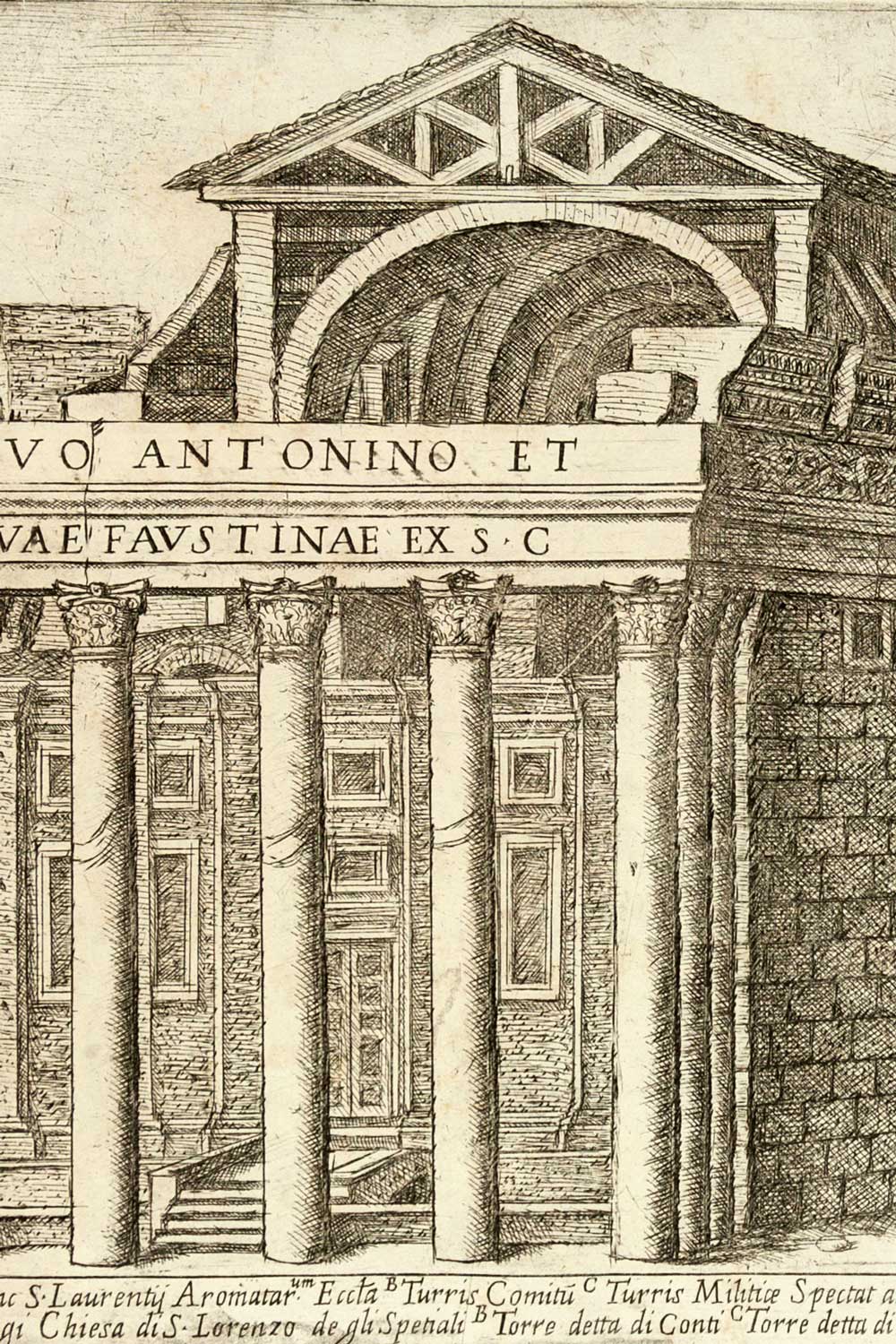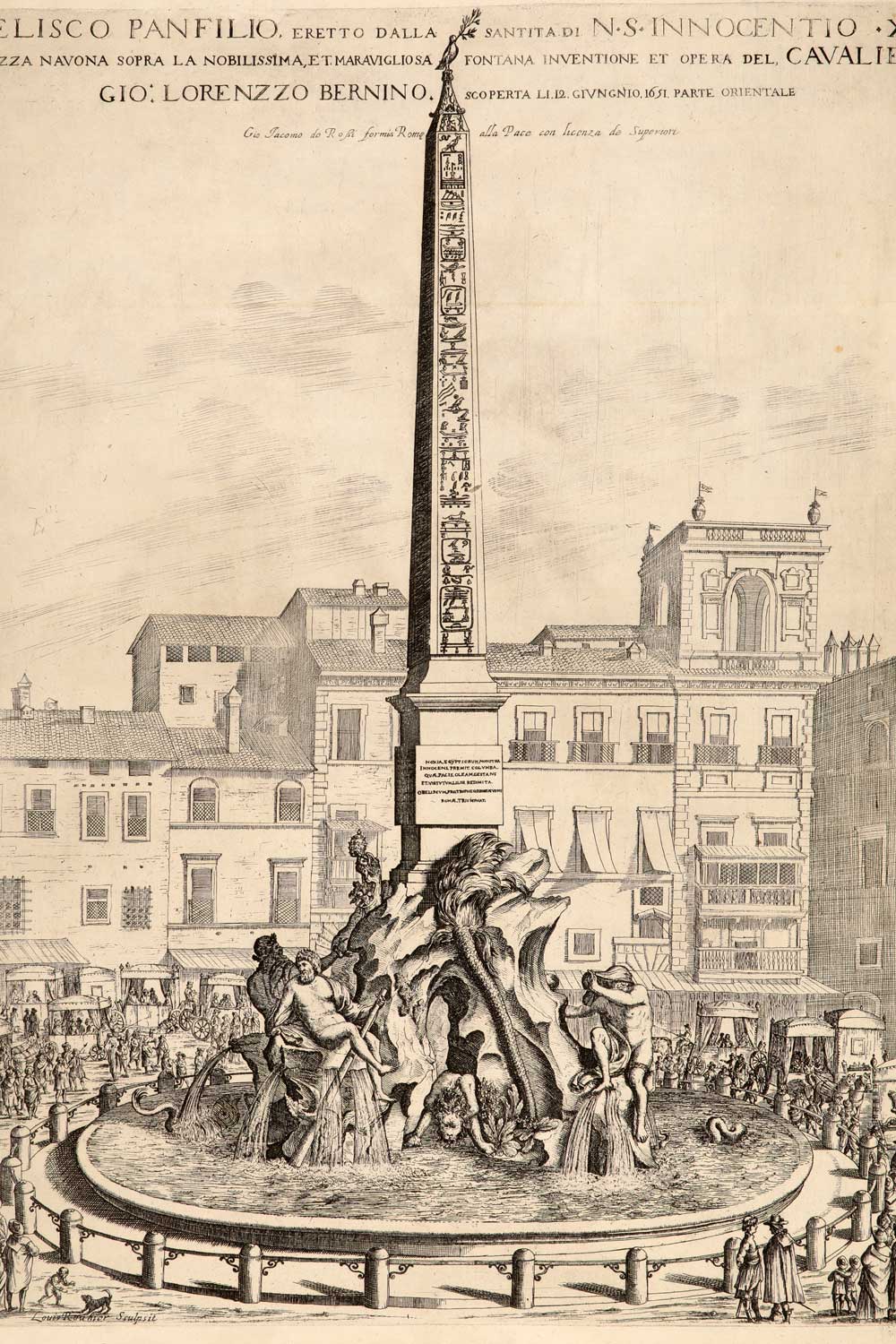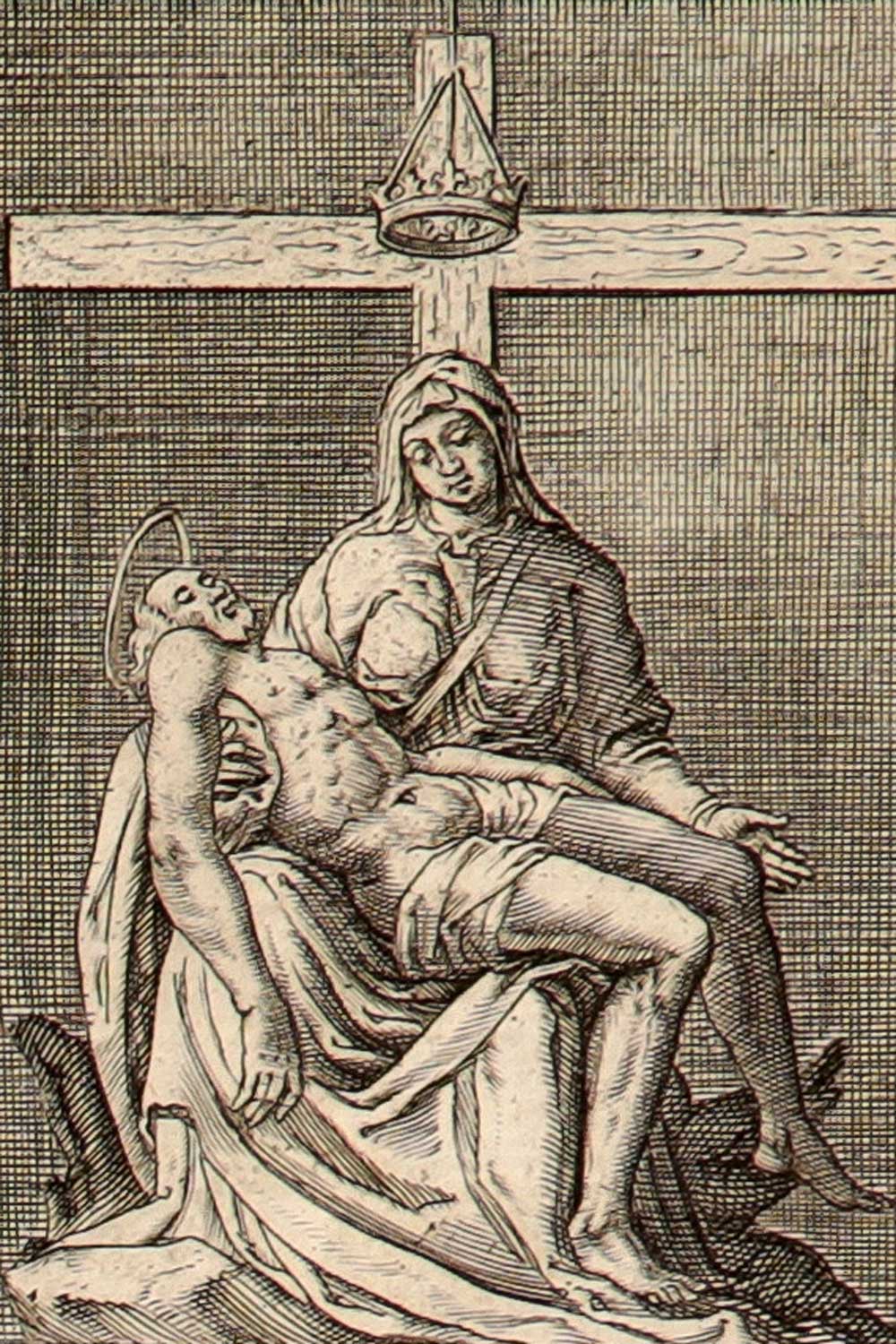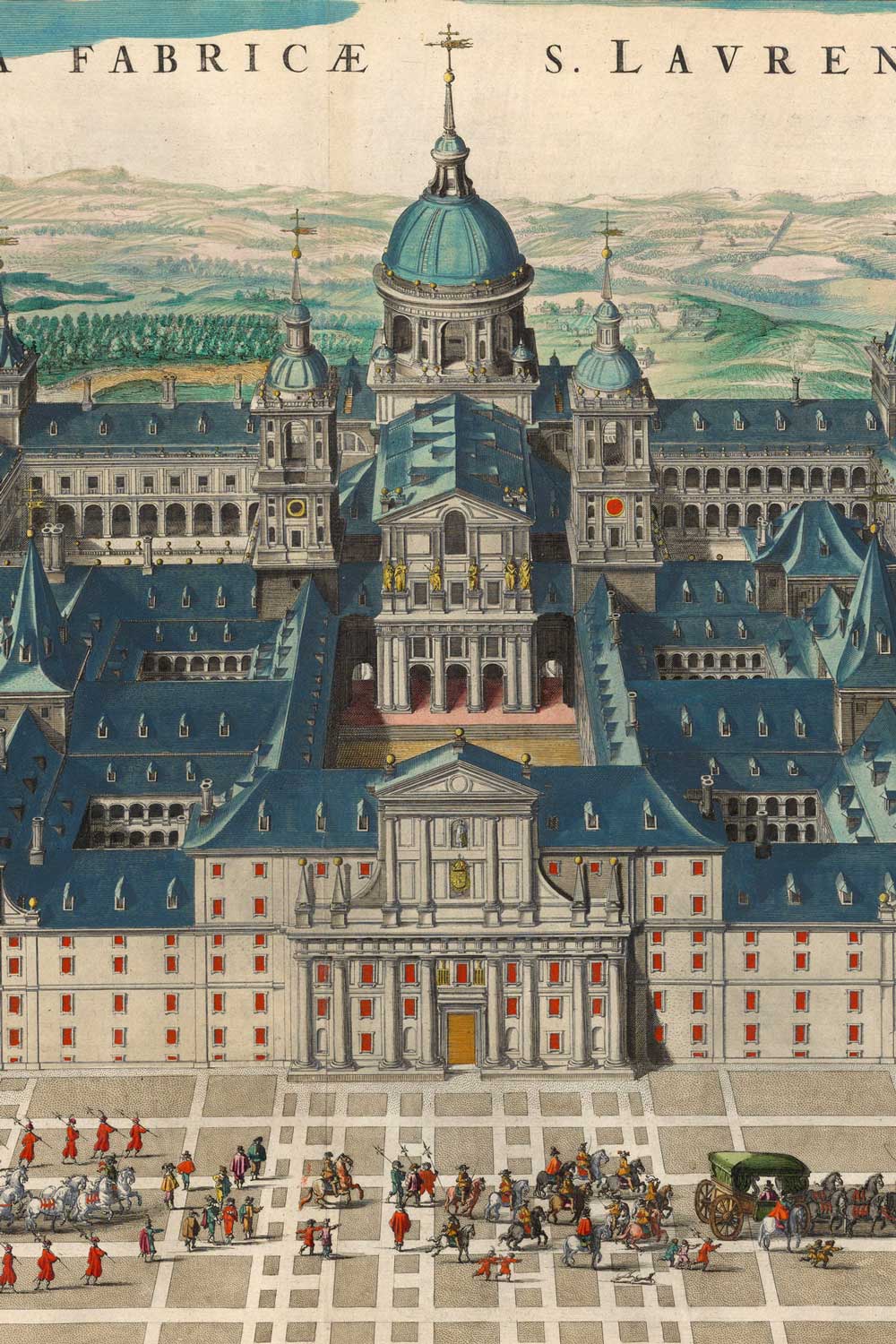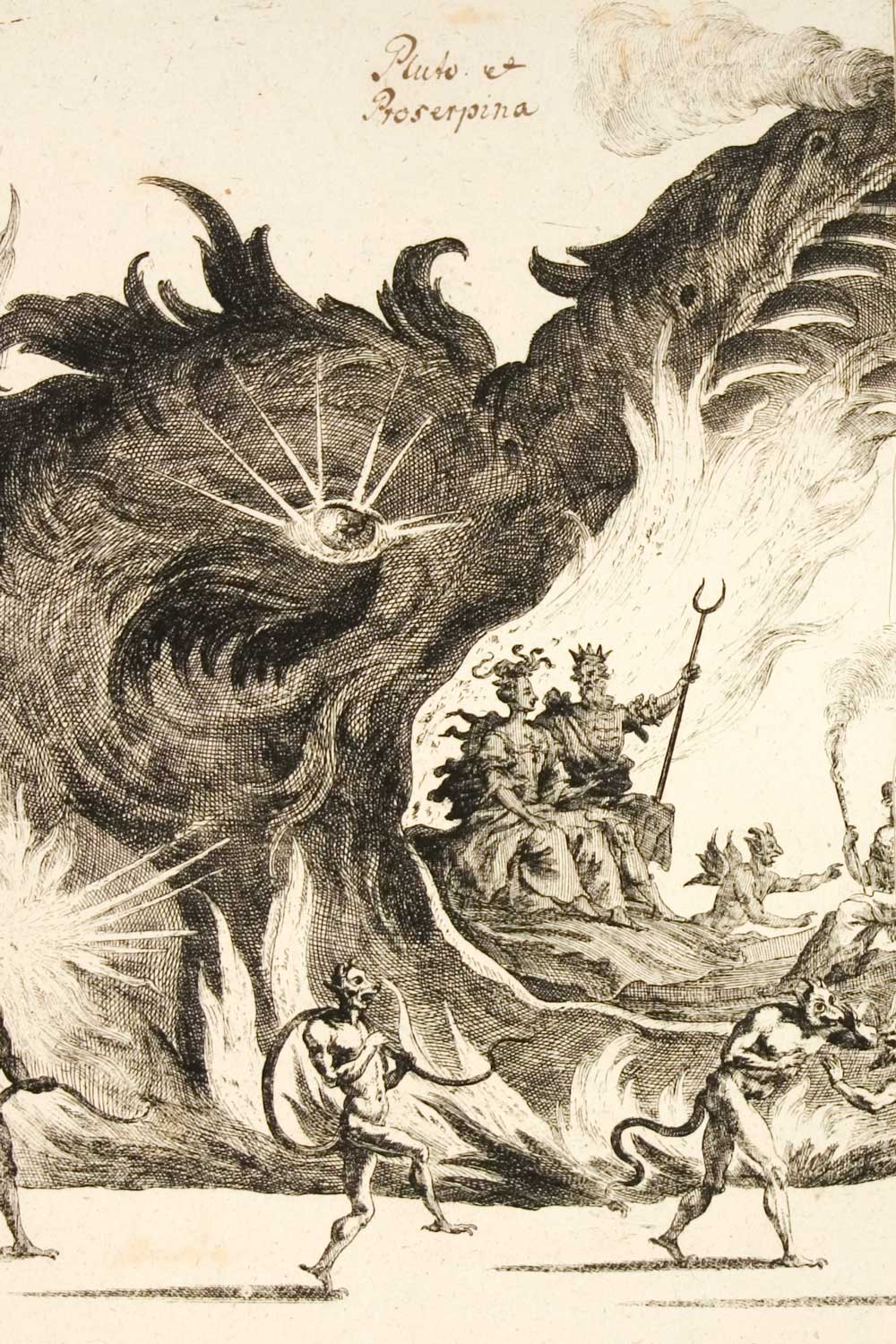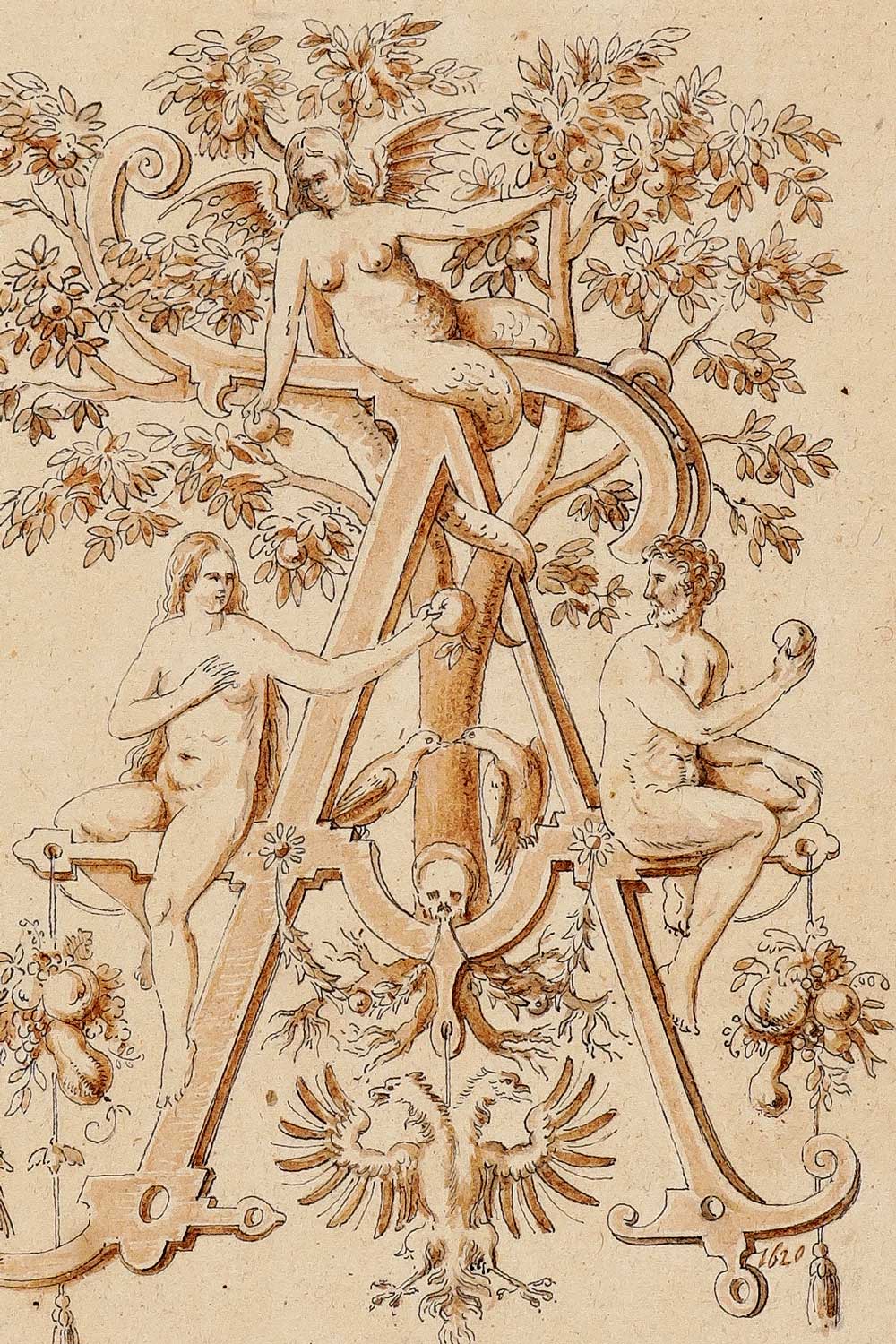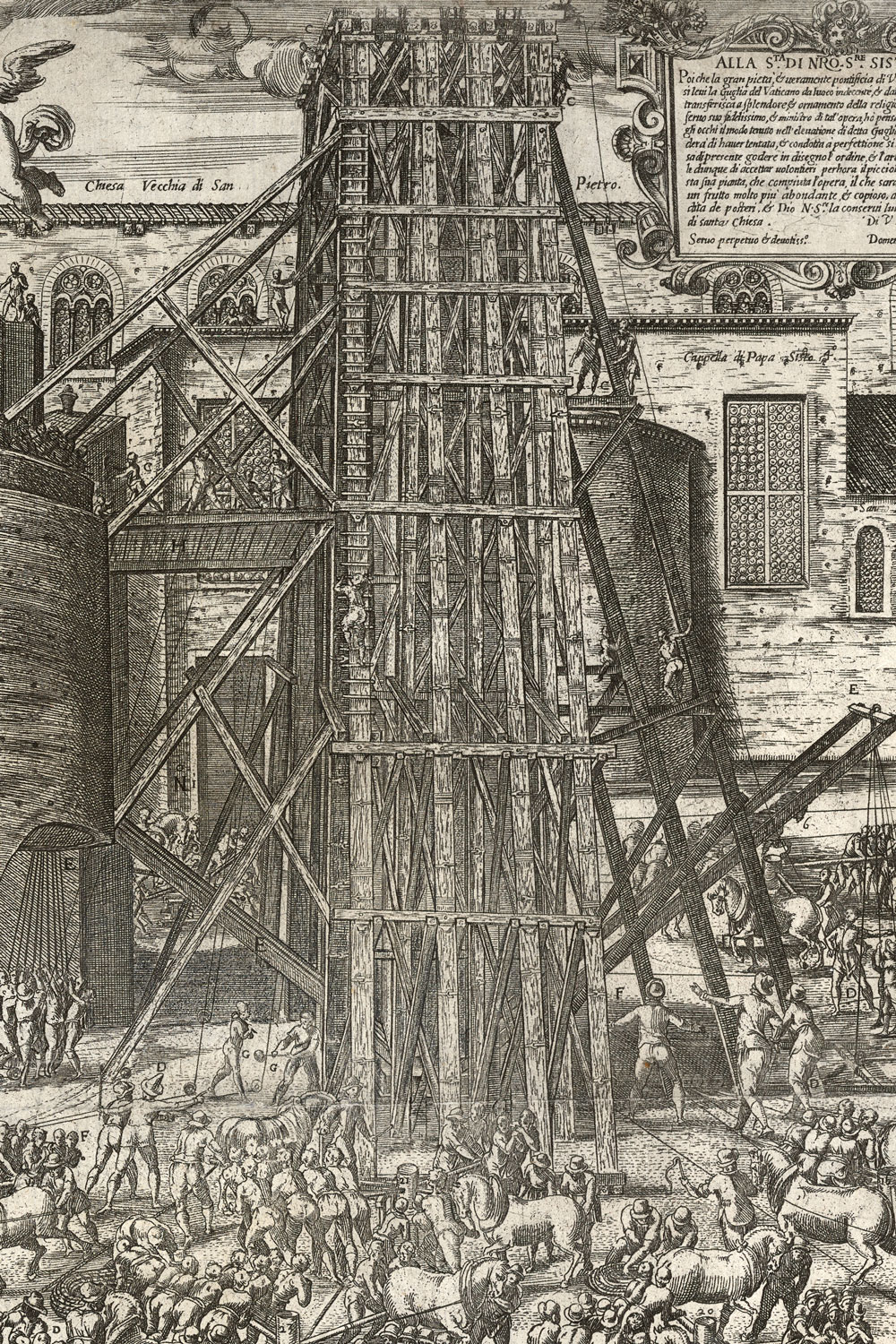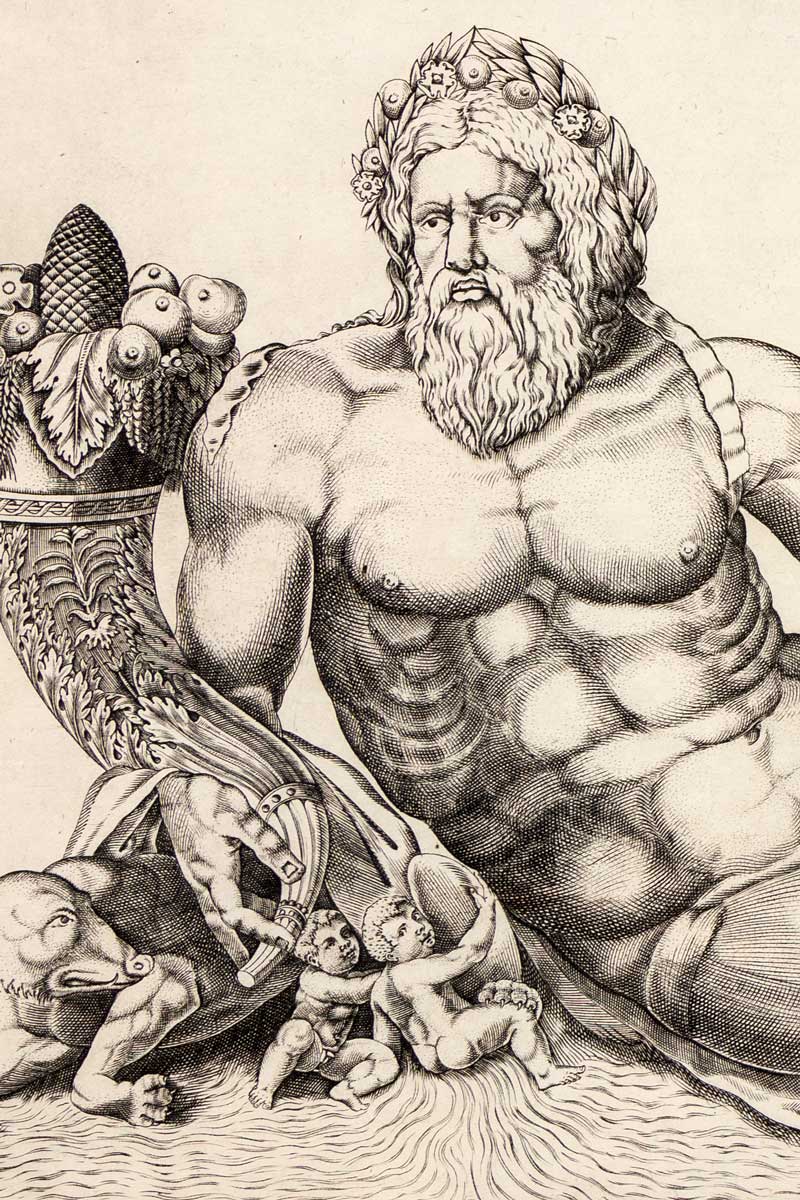Art and Architecture
JHU is home to one of the world’s leading rare book collections on Renaissance architecture, the Laurence Hall Fowler Collection, named for the famed Baltimore collector and architect, who also designed the Great Library at the Evergreen Museum & Library where the collection now lives. Thanks to its size and scope, the Fowler Collection serves as a standard reference point for nearly every major work of architectural theory from the late 15th to the 18th centuries. The collection consists of scores of editions of the seminal architectural treatises of Leon Battista Alberti, Albrecht Dürer, Sebastiano Serlio, and Andrea Palladio—of Palladio in particular, the Fowler Collection holds some 37 separate early editions, translations, and commentaries. Also well represented are the principal works of Jacopo Barrozzi da Vignola, Philibert Delorme, Jacques Androuet du Cerceau, Inigo Jones, Vincenzo Scamozzi, Claude Perrault, and Jacques-François Blondel, to name just a few. So encyclopedic is the collection that, after the initial publication of The Fowler Architectural Collection of the Johns Hopkins University (Baltimore, 1961), individual “Fowler Numbers” assigned to each book in that bibliography now serve as standard bibliographical reference within the world of scholarship and the antiquarian book trade.
In 2010, the Fowler Collection was vastly expanded with the acquisition of the Stephen Parks Collection of Augustus Welby Pugin and the Gothic Revival—over 150 rare books, pamphlets, ephemera, and manuscript letters. Following Dr. Parks’s death, the collection was further augmented by a gathering of dozens of paintings, drawings and other works on paper, as well as a small collection of Gothic Revival decorative arts materials relevant to the Pugin Collection; the latter are currently on long-term display in the Stern Center rooms at Evergreen.
The Fowler and Parks Collections are complemented by substantial holdings, primarily held at Evergreen, of European plate books, particularly ones that celebrate the architecture and ancient ruins of Rome. These include a stunning copy of the editio princeps of Giovanni Battista Piranesi’s monumental Antichità Romane—all four large folio items sumptuously bound for the Prince-Bishop of Strasburg. In addition to numerous individually issued prints, Evergreen is also home to a complete edition of Piranesi’s collected works in a massive folio-volume set. Architects known more for their edifices than books of architectural theory are also rife within the broader collections at JHU, including rare ephemeral prints of the principal works of Gian Lorenzo Bernini; numerous studies of ancient Greco-Roman architecture; vedute of the major cities, palaces, and the great churches and cathedrals of Europe; and large folio festival books showcasing streetscapes and the massive edifices of the metropolitan built environment of the premodern and early modern periods. Another centerpiece of these architectural collections are numerous separately issued prints on the elevations of the great obelisks of Rome in the sixteenth century, principle among them a copy of Natale Bonifacio’s iconic three-sheet etching of the movement of the Vatican obelisk by Domenico Fontana in 1586.
The Garrett Library and George Peabody Library collectively hold an extensive gathering of portfolio plate books representing the artistic works of major artists—from Raphael’s Vatican Loggias to William Hogarth—and European museum collections, in particular a large proportion of the earliest catalogues representing the art collections of the British Museum. The latter complements one of the most extensive collections of early illustrated “wunderkammer” books in the United States, which collectively document the major private European museum collections.
Numerous of the earliest printed books exploring visual perspective and geometric proportion form part of the collections at JHU, including the seminal works of Leon Battista Alberti, Luca Pacioli, and Albrecht Dürer, among others. Art theory and criticism is similarly well-represented, particularly in the eighteenth-century, including early editions of Jean-Baptiste Dubos, Réflexions critiques sur la poésie et sur la peinture (1719); Johnathan Richardson’s An Essay on the Whole Art of Criticism as It Relates to Painting (1725), and William Hogarth’s The Analysis of Beauty (1753). The history and historiography of Western art is also well-represented, from the early Renaissance to the Enlightenment, beginning with the first complete edition of Giorgio Vasari’s Lives of the Most Excellent Painters, Sculptors, and Architects (1568), and extending into eighteenth-century milestones, among them first editions of Johann Winckelmann’s History of the Art of the Ancients (1764) to Gotthold Lessing’s Laokoon (1766).
The collections of Johns Hopkins University are richly endowed with books that are either works of art in and of themselves, or that otherwise document the history, practice, and theory of visual art in painting, sculpture, engraving, and the decorative arts. Principal among the first of those categories is JHU’s modest, but distinguished, collection of medieval and Renaissance manuscripts. The earliest of these, and arguably the most celebrated illustrated manuscript in the Hopkins collections, is the ca. 1467-68 “Garrett Zafarnama” of Sultan Husayn Mirza, a very early manuscript of the famous “Book of Victories” of Sharaf ad-Din Ali’ Yazdi executed at Herat. The volume bears multiple full-page Persian miniatures. The Peabody Library has long been home, as well, to the magisterial 1492 Luneborch Prayer Book. Executed in the northern Netherlands and attributed to the Master of the Dark eyes, this miniature volume retains all 26 of its original full-page miniatures. Also present in the collection at Evergreen is a sumptuously produced mid-Quattrocento Florentine manuscript copy of Josephus’s Wars of the Jews, endowed with a handsomely illuminated title page. Written in the Italian vernacular in a distinctive humanista hand on vellum, this volume bears the papal arms of Pius VI.
—Earle Havens



